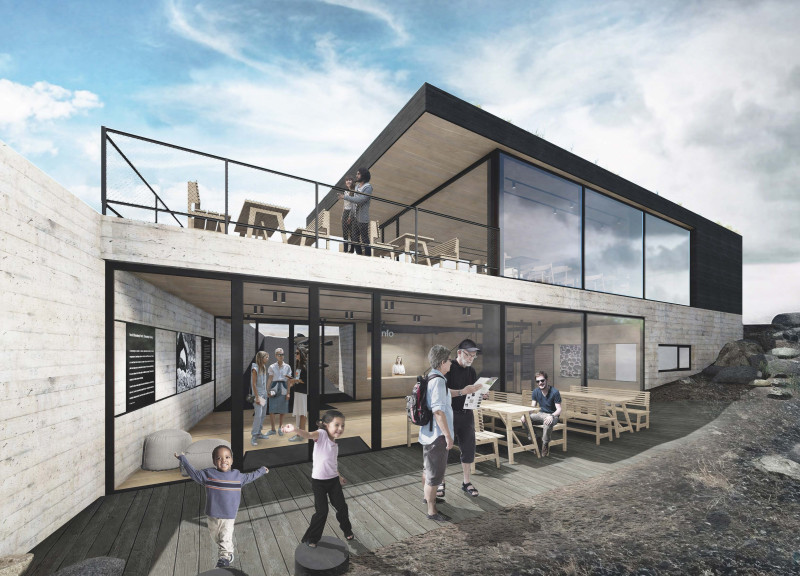5 key facts about this project
The project represents the confluence of nature and architecture, embracing sustainable practices while enhancing the visitor's connection to the natural world. Its function extends beyond mere shelter, as it facilitates education, recreation, and community interaction. By offering information on the volcanic landscape and promoting ecological awareness, the center positions itself as a vital resource for tourists and locals alike.
A key feature of the design is its thoughtful spatial arrangement. The center is planned with various functional areas, including an information hub, a café, terraces, and a playground. Each space is designed to meet specific needs while enhancing the overall visitor experience. The information center provides educational displays that delve into the history and geology of the Dimmuborgir region, while the café and outdoor terrace offer scenic views, allowing guests to simply enjoy their surroundings after an excursion. The inclusion of a playground caters to families, fostering a sense of community and encouraging outdoor play within natural settings.
Materiality plays a significant role in the project's essence. The use of Shou-sugi-ban wood—a Japanese technique that involves charring wood for preservation—adds both durability and a unique aesthetic that resonates with the volcanic context. The concrete slabs provide a solid structural base while enhancing thermal efficiency, and the expansive glazed windows create a connection between the indoors and outdoors, drawing the breathtaking scenery into the living experience of the center. These architectural materials reflect the colors and textures of the surrounding lava fields, ensuring that the building remains visually cohesive with its environment.
Unique design strategies are evident throughout the project, particularly in how the structure engages with the site's topography. The building is partially embedded in the ground, which mitigates the impact of strong winds, a common occurrence in this part of Iceland. This design also allows the roof to function as a green space, encouraging local flora to thrive and contributing to biodiversity. The result is an architectural form that is not only functional but also enhances the ecological richness of Dimmuborgir.
Furthermore, the center's energy systems incorporate geothermal solutions, utilizing the natural heat generated by the earth to provide heating and cooling, demonstrating a commitment to sustainability. By harvesting rainwater, the building also promotes efficient water management, illustrating a conscientious approach to resource use.
As visitors engage with the Black Lava Field Visitor Center, they are encouraged to explore not only the services provided but also the surrounding landscapes. The carefully curated pathways leading to key attractions create a meaningful journey through the site, promoting exploration and connection to the rich history of volcanic activity in the area.
This visitor center stands out as a significant architectural endeavor that marries functionality with environmental sensitivity. The thoughtful integration of the structure within its setting and the careful selection of materials exemplify modern architectural practices grounded in sustainability and respect for nature. For those interested in a more in-depth exploration of the design concepts and architectural elements involved, reviewing the architectural plans, sections, and designs will provide further insights into this unique project.


























